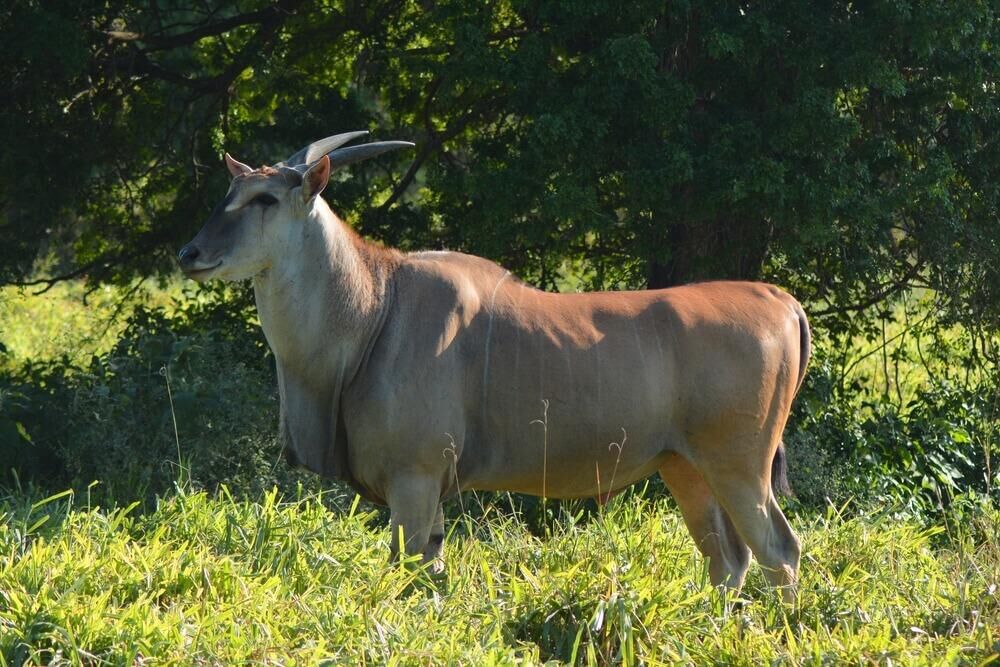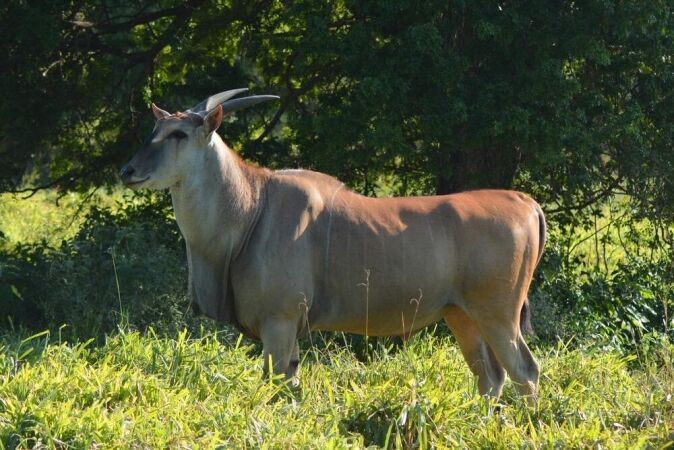

Big game hunting in Africa is not complete without adding the second largest antelope worldwide into the mix, namely the common eland, of which Livingstone’s eland is one of three sub-species. This eland inhabits East Africa and remains a sought-after African plains game trophy for hunters worldwide.
Habitats for the Livingstone eland include semi-arid and sub-desert areas with preferred vegetation of grasslands, woodlands, and bush. They live in herds that can reach up to 500 members at one time.
Elands are herbivores and graze on grasses, but also consume seeds, trees, shrubs, and tubers. Much of their water intake is obtained through the variety of foods they ingest.
TThere are not many carnivores brave enough to tackle a fully grown eland, with calves, older members, and the infirm being preyed on by cheetahs, leopards, and wild dogs. There are, however, some brave carnivores out there, and both lions and spotted hyenas are willing to take up the challenge and hunt an adult eland, most times to their detriment.
Elands have a gestation period of roughly nine months, with females giving birth to one calf. These calves are absolutely amazing in that they are up and about, running with the herd in a matter of hours after birth.
Name:
Taurotragus oryx livingstonii
Male Weight:
880- 2,000 pounds
Male Shoulder Height:
62 inches
Horns:
Both Male and Female
Gestation Period:
9 months
Life span:
15-20 years
Calling all game hunting enthusiasts to hunt Livingstone Eland
When targeting the Livingstone eland on your game hunting safari, look for an incredibly large antelope. Males weigh up to 2,000 pounds while females can weigh up to 1,320 pounds. They have a slight hump at the shoulders and males have a prominent dewlap. In terms of coats and coloring, their coats are smooth, with females having a tan coat while the males’ coat has a slight gray-blue hue to it. Both sexes have dark spiral horns, with the female’s horns being longer and thinner at 20-27 inches compared to the males’ horns which have a slightly tighter spiral and are shorter and thicker, at 17-26 inches. Although the slowest antelope, clocking in at around 25 mph, they can jump up to four feet from a dead stand, as well as being able to trot at over 20mph for extended periods.
When game hunting in Africa, the Livingstone eland is hunted by the walk-and-stalk method, shot from a blind, or even as an opportunistic hunt while out targeting other African plains game species on your hunting adventure.
The eland’s beautiful coloring is not only aesthetic but rather allows it to actively blend and camouflage itself within its habitat, making it extremely difficult to spot. Combine that with excellent eyesight, and you can see the challenge presented to hunters: This African plains game target is difficult to spot and will probably spot you first! However, the reward of a successful game hunting adventure for the world’s second-largest antelope is well worth the effort of a challenging hunting safari.
The Livingstone eland is a large African plains game antelope that requires a minimum of a thirty-caliber rifle with a 180-grain bullet to get the job done. The 9.3 x 62mm and .375 are also ideal cartridges for eland hunting in Africa. With lighter calibers like the .308, make sure shot placement is spot on and there should not be any issues getting your game hunting trophy into the salt.
Search from our range of Hunts across various popular destinations in Africa.
Find A Hunt